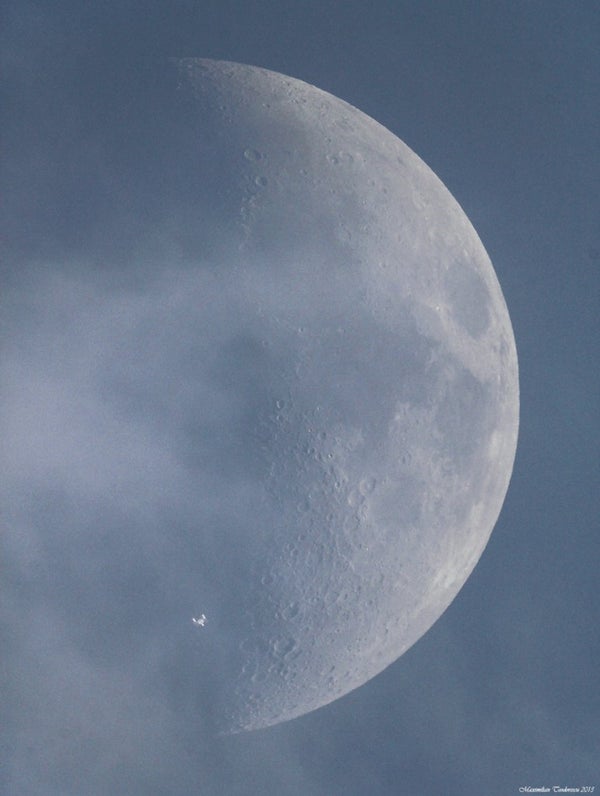This article was published in Scientific American’s former blog network and reflects the views of the author, not necessarily those of Scientific American
It’s no secret: Overthinking It loves Star Trek. We have already thought way too hard about how Benedict Cumberbatch could crush your skull, and how the most resilient little animal on the planet could fix a warp core. We love Star Trek because it uses fiction to advance a humanistic vision of the future. It adds positively to reality. So, when reality can give back to Star Trek, we perk up.
Below, photographer Maximilian Teodorescu from Romania captured the International Space Station silhouetted against the Moon in broad daylight–a wonderful shot that looks surprisingly like the transit of the ISS Enterprise.
On supporting science journalism
If you're enjoying this article, consider supporting our award-winning journalism by subscribing. By purchasing a subscription you are helping to ensure the future of impactful stories about the discoveries and ideas shaping our world today.
In a transit across the Moon, the ISS Enterprise may not be going at warp speed, but it sure is going fast. Orbiting the Earth at nearly eight kilometers per second, the ISS carries enough kinetic energy to simulate three kilotons of TNT or 15 percent of the energy one gram of matter gets from Einstein’s famous equation (or maybe a photon torpedo). Even if the pictured spacecraft is not really piloted by Kirk or Picard, shots like these are a reminder that science fiction has some basis in fact–a way to nerd out about reality. We actually have a ship in space, exploring the final frontier!
Like Neil deGrasse Tyson says, “keep looking up,” and you’ll probably find something amazing.
–
Image Credit:
ISS Transit Over The Moon by Maximilian Teodorescu
